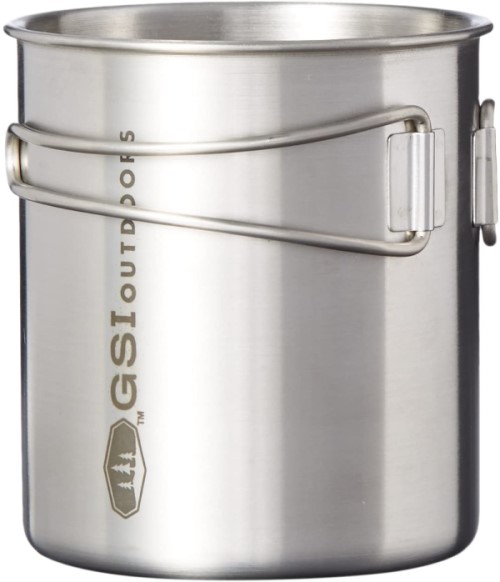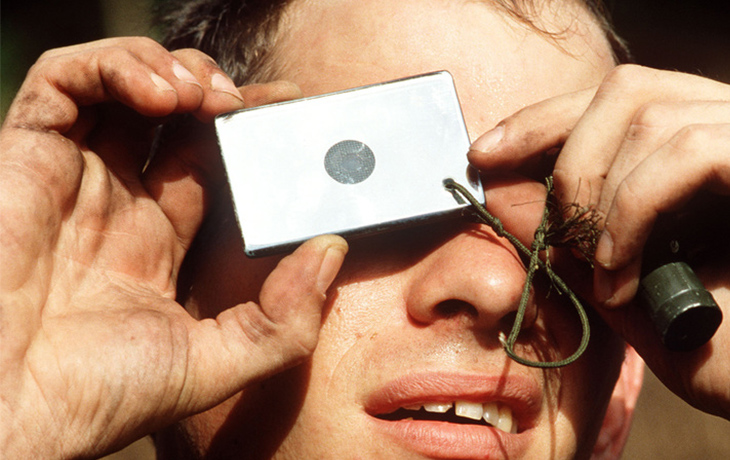Whether you’re trying to flag down a ship, aircraft, or your mall-ninja buddy, these $10-15 mirrors are lightweight, compact, surprisingly durable, and can reach up to 30 miles away. There are even documented cases of people flagging down commercial aircraft flying at 30,000 feet. And they even work in the moonlight.
Besides a general call for help, you might want to communicate with someone else without using a radio etc.
And there’s plenty of non-signaling ways you could use a mirror, such as hygiene, treating an injury, sparking a fire, or peeking around corners in zombie-infested warehouses.
Many people carry a signal mirror as part of their bug out bag. And it’s a must-have for people who live/work on water or in remote environments.
The most important bits:
- While they’ve been seen up to 100 miles away, signal mirrors have an average range of 10-20 miles.
- Most people use a 2” x 3” mirror because it’s the sweet spot between brightness and size. Signal mirrors usually weigh less than 1 ounce.
- Mirrors come in glass or plastic (eg. polycarbonate). Glass is the most reflective, but more likely to shatter. Plastic is dimmer but tougher.
- A good signal mirror should have a small hole in the center with a retro-reflective grid to make aiming easier.
- If you are lost and don’t see something/someone to aim at, periodically scan the horizon with your mirror — you might get lucky.
- If you need rescue, flash your mirror three times. Three is considered a universal distress signal.
- They aren’t difficult to use, but like all preps, it’s worth trying it out before an emergency. Aiming can take a try or three to get the hang of.
After 10 hours of research, including reviewing 30+ products, these are top choices to help shortcut your shopping. All of our picks have a hole in the middle of the mirror with a retro-reflective grid and are made of glass or polycarbonate. They also have a place for a lanyard.
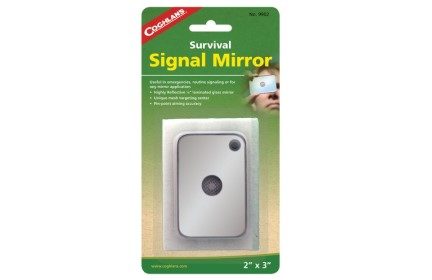
Best for most:
Coghlan's Survival Signal Mirror
The best choice for most is the Coughlan’s Survival Signal Mirror. Coghlan’s offers several survival mirrors, but the Survival Signal mirror is the best because it has highly reflective laminated glass, a retro-reflective grid, and a small lanyard hole. The laminated glass will keep the mirror from shattering if it is dropped or accidentally compressed in your go-bag.
Contenders
Although not currently top picks, these models are worth a look if you want more shopping options:
- 5col Survival Supply MIL-M-18371E Type 1, Mark 3, Military Issue 2”x3” and the 3”x5”
- Best Glide ASE Military Grade Glass Signal Mirror Type 1 – Mark 3, Military Issue 2”x3” and the 3”x5”
- Luca Elf Aid Signal Survival Mirror 2”x3”
- Meetcute 2 Pack Emergency Signal Mirror 2.25”x2.25”
- SOL Rescue Flash Mirror 2”x3”
- UST StarFlash Floating Signal Mirror 2”x3”
- UST StarFlash Micro Signal Mirror 1.5”x2”
Be prepared. Don’t be a victim.
Want more great content and giveaways? Sign up for The Prepared’s free newsletter and get the best prepping content straight to your inbox. 1-2 emails a month, 0% spam.
How do you use a signal mirror?
If you are lost you have two options when using a signal mirror: Periodically scan in a general direction to give search and rescue a chance of seeing your mirror flash, or directly signal to people, vehicles or planes.
When it comes to catching and directing sunlight there are two common methods. Both have a place when it comes to signaling:
- The first method requires a signal mirror with a hole in the center and a retro-reflective grid. You look through the hole in the middle and make sure that you are catching some sunlight in the signal mirror. Your retro-reflective grid should have a glowing dot, which means that you have captured the sunlight. After you have captured the sunlight, you pass it over your intended target. This method works great if the sun is in a good position and you can easily reflect sunlight off of your mirror.
- The second method is where you create a “V” with your fingers, catch the light in the mirror and reflect it onto your hand. Put your intended target between your fingers and alternate the light up and down the V your fingers have created. This method may be more practical if the sun is not in an ideal position.
A great video that illustrates both techniques:
What’s the right size?
Signal mirrors are commonly found in three different sizes: 1.5×2”, 2×3” and 3×5”
The US military issues both 2×3” and 3×5” mirrors. If space is an absolute premium the UST StartFlash Micro Signal Mirror is a great option. For most people, a 2×3” signal mirror is all you need.
The larger the mirror, the more light you will reflect. You may want more light transmission if you are in a desert or maritime environment.
Reflective material
Signal mirrors are available in glass or plastics (eg. polycarbonate). There are advantages and disadvantages to each material. Glass is brighter, more reflective, and is hard to scratch. The only downside to glass is that it can shatter.
Polycarbonate mirrors are hard to break and can float, but they scratch easy. Scratches can be mitigated with a cell phone screen protector or by securely storing the mirror in a padded pouch. If you have young kids and you are worried about shattered glass, a polycarbonate mirror is not a bad idea.
Polycarbonate and glass are both highly reflective surfaces, but for pure reflective power, the edge goes to glass. Our recommended product pick, the Coghlan’s Survival Signal Mirror is unique because it features glass that has been laminated, which makes it resistant to shattering.
Retro-reflective grid
Retro-reflective grids are great because they let you know when you’ve captured the sunlight and what you’re aiming at. The reflective materials create a small bloom that shows where the light will reflect back: your target. Grids can look like a mesh, star, circle, or a series of small circles.
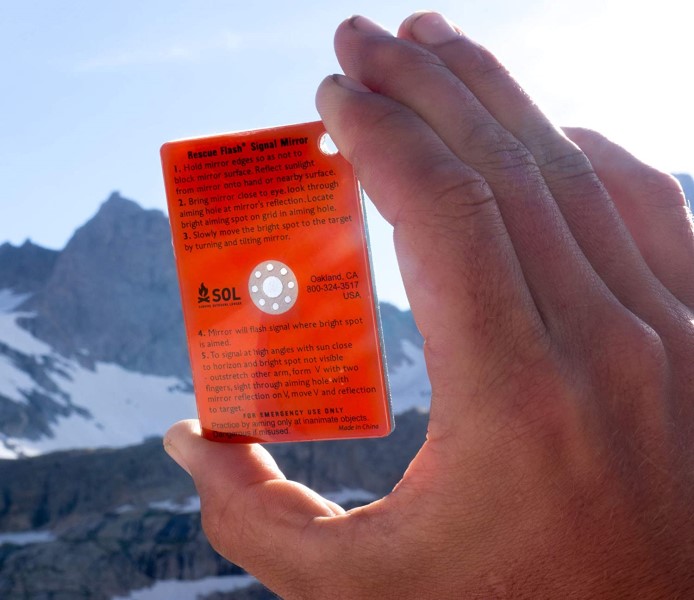
Lanyard
Signal mirrors are small, easy to lose, easy to fumble or break, and you likely don’t have a backup. So a mirror that comes with a lanyard or has a hole where you can add your own is nice. Some people throw out the cheap lanyard it comes with, replacing it with a paracord lanyard as an easy way to carry more cordage.
Review: Best paracord
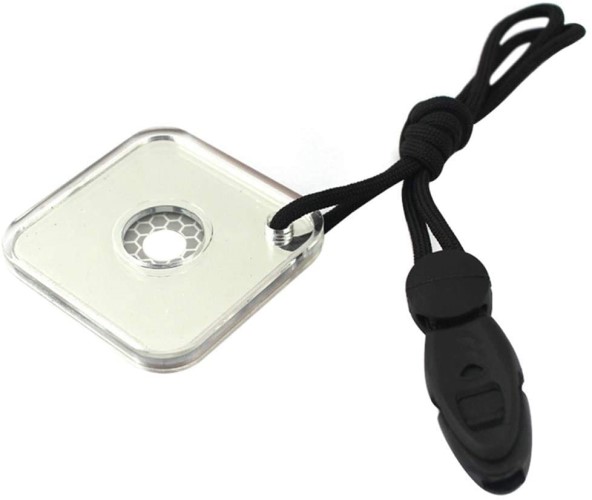
Can I just use a regular mirror?
Yes. A regular mirror can be just as effective as a signal mirror — the main sacrifice is the retro-reflective grid that makes aiming easier.
But you can simply hold the mirror next to your eye and use the “finger notch” method for aiming. Carry your mirror in a padded pouch and store it somewhere in your go-bag where it will not get crushed.
You can get creative beyond obvious mirrors. Some smartphones have reflective surfaces, for example, or the shiny metal on a canteen or pot could work.
Review: Best canteens
